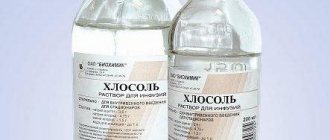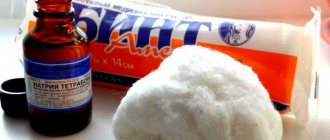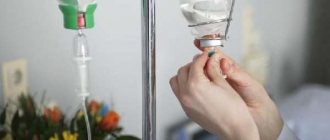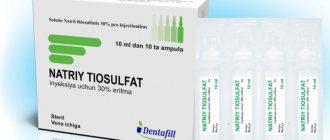The universal remedy prescribed by doctors is a sodium chloride dropper. The body is very complex and requires a careful approach to treating diseases. The composition of the drug maintains the body's water balance, helping the absorption of various medications.
Knowing its effectiveness and virtually no side effects, sodium chloride solution helps provide quick relief for serious cases such as severe food poisoning. More often, sodium chloride is called saline solution. And the patient entering the hospital receives it intravenously. Wounds are also treated with saline and a number of medications are diluted, including potassium injections.
Purpose of the sodium chloride dropper
A properly balanced water-salt balance is responsible for maintaining all systems of the human body and organs in working order. Under normal conditions, the sodium chloride compound is replenished in the body along with food, but due to pathologies there are often cases when this becomes impossible.
When diarrhea and vomiting occur (which occur due to poisoning), sodium and chlorine ions are rapidly removed from the body. In this condition, the first thing the doctor prescribes is intravenous administration of a drug to replenish the electrolyte balance.
Sodium chlorine is also used to wash the eyes, nose, and mouth. This remedy is often prescribed as a treatment and prevention of diseases in infants. It is used as an antiseptic and is even prescribed in neurology and gynecology.
Medical alkaline solution of sodium chloride is actively used in the treatment of contaminated or purulent wounds, as it has an antimicrobial effect. There are a number of conditions, the occurrence of which requires the use of a NaCl dropper:
- A sodium chloride drip is used for depressive states with severe apathy;
- In case of poisoning, mainly in severe cases;
- For cholera or pneumonia;
- Saline solution is used to treat sinusitis;
- Vitamin poisoning (overdose);
- Hydrochloride is prescribed for edema;
- For constipation and intestinal problems;
- For burns. They require delicate processing and replenishment of the water-salt balance;
- Against hyponatremia or hypochloremia;
- With dehydration and forced diuresis;
- Saline solution will help in identifying internal bleeding.
A stronger or hypertonic solution is used much less frequently. Sodium chloride corrects the pressure of plasma and intercellular fluid in pathological diseases.
Why are IVs prescribed to women expecting children? During pregnancy, women are prescribed the solution intravenously:
- To relieve toxicosis;
- For swelling;
- When blood pressure decreases during childbirth.
Indications for use
Sodium chloride droppers are prescribed for the treatment of acute conditions, or for diluting various drugs for acute and chronic diseases.
Examples of using the medicine in conjunction with other drugs are as follows:
- with Diphenhydramine
(Diphenhydramine) - for urticaria, anaphylactic shock, and other allergic reactions; - with Drotaverine
- for renal colic; - with Pyridoxine
- for muscle pain, diseases of the nervous system; - with Lincomycin
- for pneumonia, abscesses, sepsis.
An isotonic solution is prescribed to adults and children with a lack of sodium in the body. This occurs more often with acute or chronic dehydration (for example, with intestinal infections, poisoning with diarrhea and vomiting).
Also, the indications for use of the solution are as follows:
- acidosis;
- overdose of hormonal agents, antibiotics and other drugs;
- acute heart failure;
- hypokalemia;
- maintaining the required volume of fluid during operations and after bleeding;
- burn disease.
During pregnancy, the drug is administered for severe toxicosis, for severe edema, as a detoxification method, for a sharp drop in blood pressure during childbirth, after a cesarean section.
Also, saline solution is often dripped in case of alcohol, drug intoxication, or in case of overdose of drugs for potency and weight loss (for example, Yohimbine).
What is saline solution?
Sodium chloride solution is odorless and colorless. Supplied as a liquid substance for intravenous and intramuscular administration, subcutaneous or external use. For medical reasons, the liquid is used to dilute medications, it can be used to wash the eyes, and it can be used as inhalation (both with and without soda).
In medicine, an isotonic saline solution with a strength of 0.9 percent is used; sometimes the use of hypertonic NaCl, a stronger solution, is prescribed.
When necessary
In medical practice, saline solution is widely used.
It is used:
- To prevent dehydration;
- To thin the blood;
- To maintain plasma volume in the blood during surgical operations;
- If large blood losses have occurred;
- For high degrees of burns;
- In diabetic coma;
- For diarrhea;
- Rhinitis;
- Sore throat;
- Sinusitis;
- For crusts in the nose in newborns;
- For allergies;
- For bedsores, dressings are moistened;
- Used for inhalation;
- Administered intravenously using droppers or in the form of injections with other medications.
What does a dropper look like?
A saline drip is a clear liquid in a glass vial that is given intravenously. Sodium chloride is pure water in which sodium chloride ions are dissolved. Chlorine is poisonous, but with sodium contained in the blood plasma, it acquires active rehydrating and restorative properties.
Dropper Sodium chloride (NaCl 0.9%)
According to the classification, it belongs to the group of regulators of water balance and alkaline balance in the body. Due to the fact that sodium chloride solution is used as a diluent for drugs (for diluting drugs), it can be given the title “universal substance”. Specialists in various fields classify saline solution as a decongestant drug.
Pharmacodynamics
Chlorine and sodium particles are the main inorganic components of the extracellular fluid, maintained by the corresponding osmotic pressure of the blood plasma and extracellular fluid.
Sodium chloride is a saline solution that restores water balance and relieves symptoms of poisoning. By compensating for the lack of salt, the solution allows you to achieve results in the treatment of various pathologies.
External use helps to immediately remove purulent exudate from the wound and destroy pathogenic microbes. When injected into a vein, a diuretic effect is provided and the missing chlorine and sodium are replenished.
Types of saline solution
Medical saline solution for IVs is available in two forms:
- Isotonic sodium chloride solution 0.9%. This is the most used form of the drug (hydrochloride). It is used both for complete intravenous administration to the patient and as a diluent;
- Hypertonic saline solution is a stronger prototype (5 – 10%). Often there are 7% solutions. The drugs must be diluted with distilled water or administered as is. Its permissible dosage in saline solution is several times lower, since it is a very powerful sorbent.
| NaCl | Distilled water | |
| Isotonic solution | 9 g | 1000 ml |
| Hypertonic solution | 50–100 g |
Solutions and preparations of sodium chloride, composition
Chemical formula NaCI, sodium salt of hydrochloric acid, water-soluble white crystals.
A sterilized solution that contains 9 grams of sodium powder per liter of distilled water is called isotonic or physiological solution of 0.9% sodium chloride. Ampoules containing 5, 10, 20 ml of saline solution, which is used to dissolve the medicine. For the treatment of external areas of the body, glass bottles of 0.9% saline solution with a volume of 100, 200, 400 ml and one liter have been launched.
Sterile hypertonic or 10% solution, contains 10 g of sodium chloride per liter of distilled water, bottles of 200 and 400 ml.
Sodium chloride is available in tablets weighing 0.9 grams.
This drug is also presented in the form of a nasal drip spray, the contents of the can are 10 ml.
Release form, composition of saline solution and packaging
The most common form of saline solution is in 50 and 500 ml bottles and bags. Also, a medicinal solution in saline is available in ampoules. When introduced into the body, it has detoxifying and rehydrating properties. There is a condition when it is necessary to compensate for sodium deficiency in the human body. The reasons for its sharp shortage include poisoning and dehydration. Sodium chloride is injected drip or stream into the body when there is a lack of essential minerals.
Release forms Sodium chloride
Signs that a person does not have enough sodium (you need to put on an IV):
- A sudden thirst that is difficult to quench. An indicator of sodium deficiency may be the desire to drink salted water, after which the person feels short-term relief;
- Lack of appetite even at the sight of your favorite dishes;
- Nausea, vomiting (cleansing the body);
- Confusion, lethargy and apathy;
- Increased heart rate (feeling like your heart is jumping out of your chest);
- Dry skin and visible loss of elasticity;
- Anuria (decreased discharge or complete absence of urine).
It performs the function of transmitting nerve impulses, is responsible for electrophysiological reactions in the human heart, helps carry out metabolic processes, and maintains the required volume of blood and cellular fluid.
Human blood plasma contains many inorganic components, including chlorides and sodium salt. The main task of chlorides is to maintain and treat normal acid-base balance. Sodium is responsible for the water-electrolyte balance of a person.
As a result of severe stress in the body, this balance can very quickly be disrupted. Because of this, all the sodium located in the vascular bed is rapidly eliminated from the body, drawing water along the way. This leads the body to severe dehydration.
Saline solution and its use
Initially, saline solution is a liquid based on distilled water. Sodium chloride, which is the active ingredient of the presented drug, is ordinary table salt or according to the formula NaCl. Crystals of a particular substance dissolve easily in water, and the concentration in saline solution is 0.9%. This ratio is determined by the nuance that in the fluids of the human body it is exactly like this. The use of saline solution allows you to minimize the harm from the applied drugs, since its physicochemical parameters do not allow disruption of the cell membrane, which is why the product is used.
In cases where the water-salt balance in the body is disturbed due to certain diseases or physical damage, the intravenous use of saline solution becomes simply necessary. The result and main symptoms of a particular condition can be indicated:
- blood thickening and blood flow disturbances;
- spasmodic conditions of muscle tissue;
- disturbances in the functioning of the central and peripheral nervous systems.
The most common problems leading to an imbalance of a particular type can be listed as follows:
- poisoning (diarrhea and vomiting);
- extensive burns;
- inflammatory diseases (dehydration at fever);
Accordingly, there is a need to restore the water-salt balance in the blood, for which intravenous saline-based drips are prescribed. Additionally, other drugs may be included in the composition that correspond to the current condition of the sick patient.
During pregnancy
One of the common complications during pregnancy among women, especially in the early stages, is toxicosis. He seriously exhausts the woman with constant vomiting. If the state of toxicosis from a mild stage develops into a more complex form, the expectant mother is sent to the hospital for examination and relief of the condition.
A dropper with saline solution during pregnancy
Saline solution is administered intravenously into the body. It is safe for both the mother and the unborn child, which is why it is used almost everywhere. With its help, in combination with medications, electrolyte balance is restored. The body is saturated with minerals and vitamins.
NaCl is prescribed to pregnant women as a “placebo”, since pregnancy is a serious stress for the body and nervous system as a whole. Being under the supervision of a doctor and receiving a drip with saline solution, the woman calms down, and the nervous system gets the opportunity to relax and receive additional treatment. This reduces the likelihood of premature termination of pregnancy.
Treating cough with saline solution
Many are accustomed to treating coughs with various syrups, tablets, sprays and powders. But do not forget about the possibility of getting rid of an unpleasant symptom with the help of inhalations. It is for these purposes that a saline solution can be used. When inhaled, the vapor will penetrate into all parts of the respiratory system, thereby helping to liquefy accumulated mucus. Sodium chloride also has an antiseptic effect, which will speed up the healing process.
For a more effective therapeutic effect, you can add medicinal herbs, essential oils or medications to the saline solution. For coughs, both dry and productive (with sputum production), the procedure is done using a nebulizer. The heat-moisture inhaler is only suitable for treating the upper respiratory tract. In order for the therapy to be beneficial, you must first consult with your doctor and select components for inhalation with saline solution.
The procedure helps transform an irritating dry cough into a productive one and reduce the number of attacks. If sputum has already begun to separate, inhalation with saline solution will also have a preventive effect so that the disease does not become protracted.
For alcohol intoxication
Alcohol intoxication is a common form of body poisoning. In some cases, its harm can be extremely severe. Without quick help, the patient may face coma or even death. Devices are used to relieve symptoms of poisoning and remove toxins from the body.
The main signs of alcohol intoxication:
- Increased weakness throughout the body;
- Severe dizziness;
- Nausea leading to vomiting;
- Strong headache;
- Fuzzy, confused consciousness;
- Cardiopalmus;
- Increased pressure.
For intravenous infusions of NaCl 0.9 percent, droppers with saline are prescribed at regular intervals. This allows you to saturate the body with substances and weaken the effects of toxins.
Saline solution Sodium chloride for droppers in combination with a medicine selected depending on the severity of the patient’s condition helps eliminate poisoning of the body with ethyl alcohol and its metabolites. This occurs due to blood thinning, which significantly reduces the severity of withdrawal symptoms.
Carrying out inhalations with saline solution
For acute respiratory diseases, accompanied by cough, difficulty breathing through the nose, runny nose, redness of the throat, it is good to treat with inhalations.
To prepare the inhalation mixture, use saline. sodium chloride solution for inhalation. The isotonic solution is mixed with any medicine (antitussive, bronchial, anti-inflammatory, etc.) in equal proportions. It is better to use the solution in ampoules.
Any type of inhaler can be used for the procedures. Do 2-3 inhalations a day. Duration for children - 5-7 minutes, adults - 10.
The instructions do not contain information about contraindications and side effects . It is allowed to use sodium chloride saline solution for inhalation during pregnancy.
Saline solution: instructions for use for a dropper
The following are indications for use:
- Most often, sterile saline is used to administer intravenous drip to the patient;
- Before the procedure for administering the medication begins, it should be warmed to room temperature in advance;
- The volume of medication to be administered orally should be calculated based on the severity of the condition, the volume of fluid lost, the age and weight of the patient;
- The average daily dose of sodium chloride infusion is 500 milliliters . This amount allows you to completely restore the daily volume of water and electrolyte balance. In more complex cases of intoxication and dehydration, the patient can receive up to 3000 ml during the day;
- The optimal rate of administration of the drug is 540 milliliters of solution per hour ;
- If the condition is severe, a decision may be made to increase the speed of the drip to 70 drops per minute ;
- For pediatric patients, the dosage of the amount of solution will be calculated based on the ratio of the patient’s age and his weight. There is a special formula for this. In most cases, these volumes range from 5 or 10 to 100 ml. If taking the solution for a long time is indicated, the doctor must prescribe a general analysis of urine and blood plasma to monitor the level of electrolytes in the body;
- When the solution performs auxiliary dilution of drugs with other drugs, its dosage varies, usually from 50 to 250 milliliters. It must be diluted by stirring thoroughly. The drugs are diluted in a sterile room;
- Hypertonic solution should not be used so often ; it is prescribed exclusively as an intravenous route. The volume of infused solution depends on the severity of the condition and the needs of the patient’s body. The daily dosage is 10 – 30 milliliters;
- If the patient urgently needs to quickly replenish the presence of chlorine and sodium ions in the body, 100 ml of isotonic solution of sodium chloride is dripped into him;
- In practice, the use of saline solution for enemas is very common. They alleviate the patient’s condition with increased intracranial pressure, when swelling of various origins occurs, hypertension, and also when colon erosion occurs;
- If the patient has festering wounds, various kinds of abscesses and boils, the doctor will most likely prescribe compresses using sodium chloride;
- Both isotonic and hypertonic saline solutions can be actively taken to rinse mucus or pus from the sinuses. In pharmacies you can find a type of medicine produced in the form of a spray for convenient use. You can also use a regular medical pipette to rinse your nose, instilling 2 drops of the solution into each nostril several times a day (up to 10 drops per nostril);
- At the first symptoms of colds and upper respiratory tract diseases, the use of inhalations of this solution is a very effective means of combating colds in the early stages.
As you can see, the instructions for using sodium chloride are quite complex. It is very important to observe all its proportions and dosage sizes, otherwise it may cause side effects.
Methods of application
Intravenous and subcutaneous administration
If the patient needs to be given intravenous drips or used as intramuscular injections, doctors often use saline solution. The temperature of the product should be 36-38 degrees.
The patient is given a drip taking into account age, weight, diagnosis and the number of elements of the composition. On average, a person needs up to 500 ml of saline per day.
It is necessary to drip the dropper in such a way that there are no more than 70 drops per minute. Only a sterile drug is used intravenously.
To cleanse the intestines
How is the composition useful for the digestive system? For constipation, it stimulates bowel movements, cleanses the body of toxins, and can be drunk to induce vomiting in case of poisoning.
To increase appetite and eliminate nausea, you can use a product with glucose. Use only a sterile solution heated to a temperature of 36-37 degrees.
For rinsing the throat
The product is useful for treating a throat. The drug does not injure or dry out the mucous membrane. It is allowed for pregnant and lactating women. They can treat children of any age. To do this, dissolve the salt in water, filter and gargle.
Side properties
With a short-term one-time use of sodium saline solution, there are practically no negative consequences on the body, but if you need to use the drug for a long time, unpleasant side effects may occur, namely:
- A common side effect of saline solution is the occurrence of malaise, weakness and increased sweating, and cases of headache and dizziness are not uncommon;
- Nausea, vomiting, diarrhea appear and unpleasant spasms in the gastrointestinal tract are possible;
- In women, disruptions of the menstrual cycle, dysmenorrhea and delays are possible;
- From the cardiology side, the patient may experience a strong increase in pulse, and as a result, rapid heartbeat, arrhythmia and a possible increase in blood pressure;
- The skin cannot withstand NaCl for a long time. In this case, it will give a negative response in the form of dermatitis;
- Due to prolonged plasma dilution, complications such as anemia or hypokalemia are possible;
- The appearance of edema in different parts of the body, as well as an increase in the acidity of the body, indicate the occurrence of side effects.
It is precisely because of the possible development of side effects that there are contraindications for long-term use. Injections of the solution are recommended to be carried out exclusively under the supervision of a specialist who will quickly be able to notice any of them, stop administering the drug if it is harmful to the patient and help to competently eliminate any complications that arise.
Side effects
Sodium chloride is often well tolerated by patients. One of the side effects of uncontrolled inhalation is a burning sensation in the area of influence of the drug solution.
If side effects develop, sodium chloride is no longer used, the patient’s well-being is assessed, and appropriate measures are taken.
Contraindications for intravenous administration
The use of NaCl is not always indicated for use; sometimes its introduction into the body is categorically unacceptable. If during the diagnosis and communication with the doctor the following points were identified, a sodium chloride dropper will not be possible (there are contraindications):
- If the sodium concentration in the body is exceeded;
- Increased chlorine content;
- Serious potassium deficiency identified during biochemical analysis;
- Situations when the development of cerebral edema is possible;
- Various heart diseases;
- Use of steroid therapy.
Sodium chloride is administered with extreme caution to patients with kidney disease, as well as in childhood and retirement age. During the process of inserting the drip, the person is under strict supervision of medical personnel.
Storage conditions and periods
The room for storing sodium chloride is selected dry, protected from light. The storage temperature of saline solution is no more than 25 degrees.
Freezing of the product during transportation, clouding of the container, or the presence of moisture in the package are not contraindicated for its use if the impermeability is maintained. After transportation in frozen form, the product must be kept at a temperature of +5-25 degrees for at least a day.
The storage location is chosen out of reach of children. The shelf life of an open bottle is no more than 3 days. When unopened, the drug is good for 1.5-3 years, it all depends on the volume. After the expiration date, the solution is not used.
Analogs
In every pharmacy there will always be analogues of saline solution sodium chloride NaCl. However, the price of saline solution will in any case be less than the cost of analogues. Below is a list of 5 such medications:
| Name | Description |
| Aqua-rinosol | The drug is available in the form of a spray |
| Aqua Master | Spray for gentle irrigation of the nasal mucosa |
| Dexamethasone | Drug for injection |
| Rizosin | Available in both drops and spray form. Designed for nasal irrigation |
| Salin | Sinus Moisturizer |
Analogues of Sodium chloride
Preparation of saline solution
Since the saline solution contains table salt, preparing the composition is not difficult. It is enough to pour a teaspoon of salt into a liter of boiled water, stir thoroughly and strain.
Since the physical solution is not sterile, it is prohibited for injection. The best use is nasal instillation.
Store the product in the refrigerator for no more than a day. If there is a need for a sterile drug, it can be purchased at pharmacies in ampoules or vials. Some formulations may also contain glucose.
Examination before use
As a rule, the doctor does not just prescribe sodium chloride. Before the appointment, an external examination of the patient should be carried out, which will make it clear the complexity of the situation. First of all, the doctor pays attention to the condition of the skin and the presence of shortness of breath. The next step is to survey chronic diseases such as kidney and heart failure.
In order to exclude anemia and increased levels of sodium, chlorine and potassium ions, the patient is sent for a laboratory test, as a result of which blood is taken from a finger for a general analysis and taken from a vein for a biochemical study. A general urine test is also prescribed, which determines the density and presence of ions leaving the body.
After conducting visual and laboratory examinations, the doctor makes a decision on whether to prescribe or refuse manipulations. In public clinics, as well as upon admission to a hospital, all of the above actions are provided to the patient free of charge.
If a person wants to speed up the process and avoid wasting time, you can always turn to a private clinic for help.
pharmachologic effect
Has a detoxifying and rehydrating effect. Replenishes sodium deficiency in various pathological conditions of the body and temporarily increases the volume of fluid circulating in the vessels.
The pharmacodynamic properties of the solution are due to the presence of sodium and chloride ions. A number of ions, including sodium ions, penetrate the cell membrane using various transport mechanisms, among which the sodium-potassium pump (Na-K-ATPase) is of great importance. Sodium plays an important role in neuronal signal transmission, electrophysiological processes in the heart, and metabolic processes in the kidneys.
Sodium is excreted primarily by the kidneys, however, large amounts of sodium are reabsorbed (renal reabsorption). A small amount of sodium is excreted in feces and through sweating.
Patient preparation
Intravenous administration of any drug always requires additional preparation. The Sodium Chloride dropper does not work on an empty stomach or shortly after eating.
Before you start using the solution, you should definitely visit the restroom to avoid a situation where you need to interrupt the procedure. During the administration of the medication, the nurse repeatedly approaches the patient to monitor blood pressure levels and visually inspect the general condition.
All components used during the procedure must be in individual sterile packaging. To check that the needle is inserted correctly into the vein, the solution is first injected very slowly; if everything is done correctly and the medicine enters the blood and not under the skin, then the required speed for this solution is set.
Dropper components
Side effect
Acidosis, overhydration, hypokalemia.
When used correctly, unwanted effects are unlikely.
When using sodium chloride solution 0.9% as a base solution (solvent) for other drugs, the likelihood of side effects is determined by the properties of these drugs. In this case, if adverse reactions occur, the administration of the solution should be suspended, the patient's condition assessed, adequate measures taken, and the remaining solution retained for analysis, if necessary.
If any of the side effects indicated in the instructions get worse, or you notice any other side effects not listed in the instructions, tell your doctor.
Duration of result
A saline solution has a fairly high permeability, so it does not stay in the human body for a long time. After inserting a dropper, the medicine will be excreted after 4 hours along with urine. If the solution is used as a means to dissolve another drug with a longer duration of action, then combination therapy gives a longer lasting effect.
In states of shock, a saline solution with sodium chloride is administered to a person in a stream, which allows a positive effect to be obtained in the shortest possible time. To consolidate the effect in difficult conditions, the jet administration is changed to a drip one closer to the end of the medicine. Otherwise, the effect of manipulation may be short-term and ineffective.
Combination with other means
Sodium chloride is a saline solution that can be combined with hydrophilic drugs (the effect of each other is enhanced). When combining with medications, you need to control the connection. It is important that the color of the solution does not change and a precipitate appears.
Recommendations for using the medicine with other drugs:
- The solution must not be combined with glucocorticosteroids in large dosages. If large doses are administered, the level of electrolytes in the urine and blood is monitored.
- No need to combine with Norepinephrine.
- Enalapril, Spirapril together with saline solution can reduce the drug effect; dose adjustment is necessary.
- It is forbidden to combine the product with Filgrastim, Polymyxin.
NaCl solution for children
Caring for the nasal mucosa for children under 1 year of age is very important in the formation of their immunity (for adults - to strengthen it). There is not only a need to cleanse and rinse the nasal sinuses during the period of acute respiratory infections and sinusitis, but also as a preventive measure to avoid these diseases. Almost every mother has a saline solution of sodium chloride in her medicine cabinet, because this medicine is completely natural and does not pose any danger to children when taken.
At its core, the drug is created from purified distilled water in which sodium chloride particles are dissolved. It perfectly moisturizes the mucous membranes of children and does it as harmlessly as possible without causing addiction.
Since the solution has excellent antimicrobial properties, it perfectly fights the accumulation of bacteria in the child’s nasal sinuses, preventing their spread. It helps relieve the inflammatory process.
The use of sodium chloride is quite common: doctors of various specialties include it in their treatment system as a medicine, as well as for the prevention of diseases.









